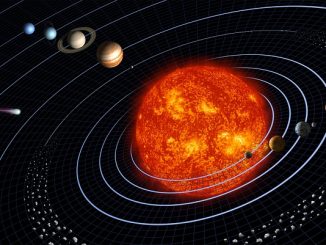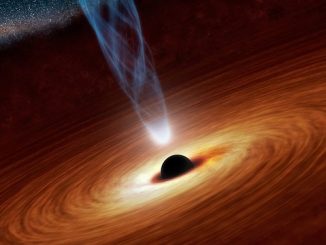
The Electromagnetic Drive, or EmDrive, is a space engine that runs on propellant-less thruster technology. It is touted to have the potential to cut travel time through space, particularly to Mars and more ambitiously with interstellar travels. The engine was designed by British scientist Roger Shawyer back in 2001. Yet, 16 years later, the EmDrive remains a controversial subject within the scientific community with many physicists dismissing the theoretical propulsion system to the world of pseudoscience.
The main reason for that skepticism consists in EmDrive’s defiance of Newton’s third law which says that for every action, there must be an equal and opposing reaction, and that for an object to move forward, something has to be pushed backward. For instance, chemical-powered rockets burn fuel and release propellants through exhausts, which creates forward thrust.
The EmDrive, however, does not operate under this premise. The thruster does produce thrust but it does so unconventionally, that is, without chemical fuels or propellants. Instead, it bounces microwaves back and forth inside a cone-shaped metal cavity to generate force. It should be noted that Newton’s three laws of motion that form the foundation for classical mechanics, have been tested and verified for more than three centuries now.
But does the EmDrive really works? If you ask scientists from NASA’s Eaglework Laboratories who replicated Shawyer’s theory, they’ll say that the thruster indeed works. In fact, NASA’s team started in 2014 to test several models to prove once and for all the viability of the technology. In late 2016, the team published their test results in the Journal of Propulsion and Power though they offered no solid explanation about the propulsion system’s mechanics.
Based on Eaglework’s tests, the EmDrive was capable of generating thrusts of 1.2 millinewtons per kilowatt in a vacuum. This is small if compared with the powerful Hall-type plasma thrusters which can generate 60 millinewtons per kilowatt. On a side note, plasma thrusters require propellants, and propellants account for additional mass that could offset the large thrust. Furthermore, chemical rockets are not any better on this aspect as they too need to carry fuels for the whole journey. Although the team’s main aim with their tests was only to prove the EmDrive’s functionality as an engine, they believe that the thruster has plenty of room for optimization.
Still, the science behind the EmDrive was met with so much skepticism, as a majority of scientists called the technology “impossible”. What drives then the EmDrive’s behavior? NASA scientists have not figured out everything yet but hinted that the answers lie in quantum mechanics.
But going into that territory has made the discussion on the subject even more complicated. For one, the EmDrive does not simply follows the conventional view of quantum mechanics. Known as the “Copenhagen interpretation”, it is widely accepted that particles have no defined locations until they’re observed. And this perspective does not apply to the EmDrive.
On the other hand, the alternative view of quantum mechanics offers a substantial basis, albeit controversial. The “pilot wave theory” is Copenhagen’s opposite view—particles do have precise positions at all times. However, for this to happen, the world must be strange in other ways and this premise is one reason for some physicist to dismiss the idea.
Scientists have not agreed yet on the exact explanation but the fact that the EmDrive works is enough to generate buzz. Once optimized, EmDrive could make space travel not only faster but safer as well—shorter travel time means less harm is done by space to our astronauts. The thruster could also elevate space traveling to “Star Trek” or “Star Wars” levels. By the way, there are always mentions of warp drives and wormholes whenever the limitless potentials of the EmDrive are brought up.
But obviously, these scenarios are still a long way off. Even Shawyer himself envisions the use of his theory only on near-Earth applications, particularly on equipping satellites that can harvest the Sun’s energy. That said however, when considering the massive advancements done in the private space industry and artificial intelligence, science-fiction scenarios can always become science-facts. For this very reason, NASA, the China Academy of Space Technology and even Shawyer himself are all currently working on launchable EmDrives.
Should the system become the norm of the future, it will not only mark the beginning of a revolution in space travel, but will also usher in a new brand of science.
Disclaimer: This page contains affiliate links. If you choose to make a purchase after clicking a link, we may receive a commission at no additional cost to you. Thank you for your support!




Leave a Reply